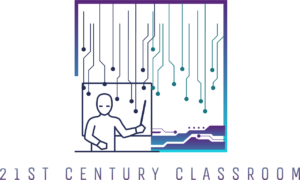Technology has played an essential role in improving classroom management and company administration. Classroom management is essential to effective learning and teaching, and it includes the classroom environment, teacher-student relationships, behavioral expectations and consequences, as well as daily routines. In the absence of proper classroom management, chaos and disorganization prevail, resulting in a negative impact on student performance. However, the use of technology can assist in the development of effective classroom management systems and skills that foster student learning.
Classroom management strategies include designing and implementing classroom rules and procedures that are easy to understand, positively stated, and posted in the room for students to see. Setting up classroom management rules and procedures at the beginning of the year is essential. One of the keys to classroom management is to provide students with productive tasks that they are too engaged in to misbehave. Learners thrive when they are aware of the expectations, and the more teachers establish daily habits in their classes, the easier it is for students to follow through.
With the increasing number of teacher responsibilities, technology can assist in relieving some of the stress associated with managing a classroom. Technology provides teachers with the opportunity to track, monitor, and engage students in their learning effortlessly. Teachers can use digital tools to structure activities that enhance classroom routines, share information with parents regarding student behavior, and provide digitally enhanced strategies to help maintain positive learning environments for all students.
One of the digital tools that can be utilized to enhance classroom management is Class Dojo. Class Dojo is a digital classroom management tool that enables teachers to track and monitor student behavior. Teachers can provide real-time feedback to students, award points for positive behavior, and communicate with parents through the app. The app is user-friendly, and teachers can customize it to fit their specific needs.
Another digital tool that can be used for classroom management is Group Maker. Group Maker enables teachers to group students together based on specific criteria, such as academic performance or behavioral traits. The tool is customizable, and teachers can select the size of the group, the criteria for grouping, and the algorithm for group formation. Group Maker saves time and makes grouping students more efficient.
Class123 is another digital tool that can be used for classroom management. Class123 provides teachers with a timer that can be projected on a wall or screen to alert students of the time parameters of each assignment and how much time is left for the next transition. This strategy helps to increase instructional time by decreasing the potential chaos and lag time often associated with changes between activities. It also keeps the students alert and engaged in the lesson.
Takeaway
As we reach the end of this discussion, it is clear that technology has become an indispensable tool in both classroom and company management. With the need for effective learning and teaching, classroom management has become crucial in achieving this objective. However, designing and implementing classroom rules and procedures can be a daunting task for educators.
Fortunately, technology has stepped in to help relieve some of the stress associated with managing a classroom. Digital tools such as Class Dojo, Group Maker, and Class123 have revolutionized classroom management by enhancing communication, providing real-time feedback, and automating administrative tasks. This, in turn, has resulted in improved student behavior, increased engagement, and more efficient use of time.
Furthermore, the use of technology in company administration has made tasks much easier and helps managers efficiently manage their organizations. From scheduling appointments to managing resources, technology has enabled companies to operate more efficiently and effectively.
In summary, the role of technology in classroom and company management cannot be ignored. The integration of digital tools has resulted in improved outcomes and streamlined processes that save time and effort. As technology continues to evolve, we can only expect that it will become even more instrumental in transforming how we manage classrooms and companies alike.

